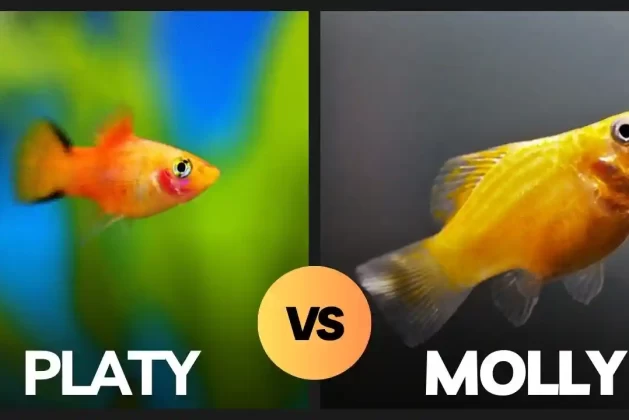Platies and mollies are popular freshwater fish known for their bright colors and peaceful nature.
They are often kept together in community aquariums, but how compatible are they really?
In this article, we will explore the similarities and differences between platies and mollies and discuss how well they behave as tank mates.
Similarities: Platies vs Mollies
Platies and mollies are livebearers, meaning they don’t lay eggs but give birth to live free-swimming fry.
Do you know how to identify when platy or molly is pregnant? Well, it’s when they start to look like a balloon! ????????
Platies and mollies are omnivorous and eat a variety of plant and animal foods. They also have similar preferences for their water conditions.
They thrive best at a water temperature to be between 72 – 78°F, a pH between 7.0 – 8.0, and a hardness between 10 – 25 dGH.
Platies and mollies are lively and social fish that love to swim in schools. They make great additions to a community aquarium.
Differences: Platies vs Mollies
| Platies | Mollies |
|---|---|
| Belong to the genus Xiphophorus | Belong to the genus Poecilia |
| Have a shorter and rounder body shape | Have a longer and more slender body shape |
| Grow up to 2.5 inches in length | Grow up to 4.5 inches in length |
| Prefer more vegetable matter in their diet | Prefer more animal matter in their diet |
| Can crossbreed with swordtails | Can crossbreed with guppies |
| Gives birth to more fry | Gives birth to less fry |
| Short gestation period | Long gestation period |
| Very active | Relaxed nature (active when in groups) |
Compatibility of Platies and Mollies
Platies and mollies are generally compatible with each other and can coexist harmoniously in the same tank as they have similar temperaments and water requirements.
However, there are some potential issues to consider when keeping them together:
- Mollies may grow larger than platies and may bully or outcompete them for food or space.
- Mollies may need some salt added to their water to prevent diseases or stress, which may not be suitable for platies or other freshwater fish.
- Platies and mollies cannot crossbreed with each other, as they belong to different genera. However, they may still try to mate with each other, which may cause stress or injury to the fish.
To avoid these issues, I recommend to:
- Keep a larger tank (at least 20 gallons) with enough space and hiding places for both species.
- Feed a balanced diet that includes both plant and animal-based foods, and supplement with algae wafers or fresh vegetables for platies.
- Monitor the water quality regularly and perform water changes as needed to keep the water clean and healthy for both species.
- Keep a balanced ratio of males and females (one male for every three females) to prevent overpopulation or aggression.
If you decide to keep platies and mollies in the same tank, provide a well-planted setup with hiding spots and open swimming areas to promote their natural behavior.



Leave a comment